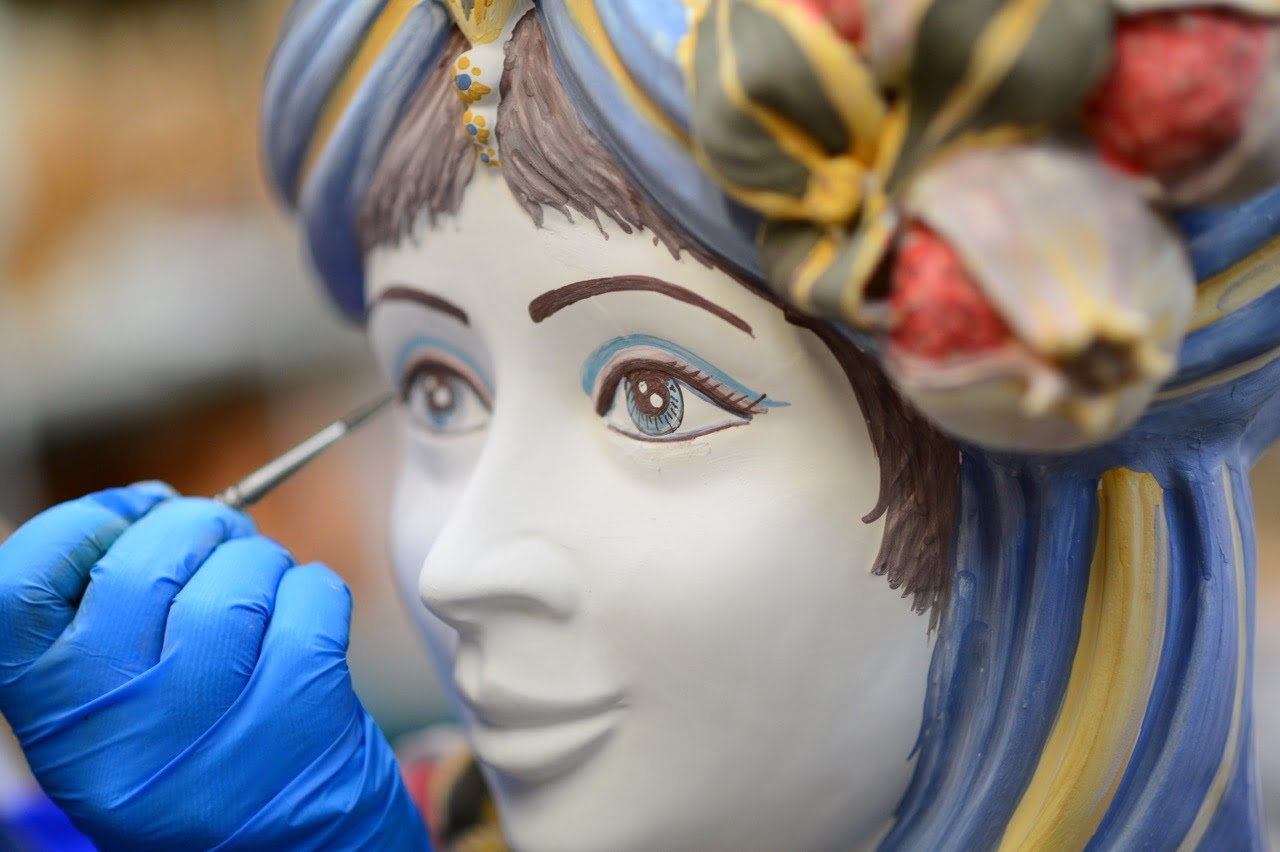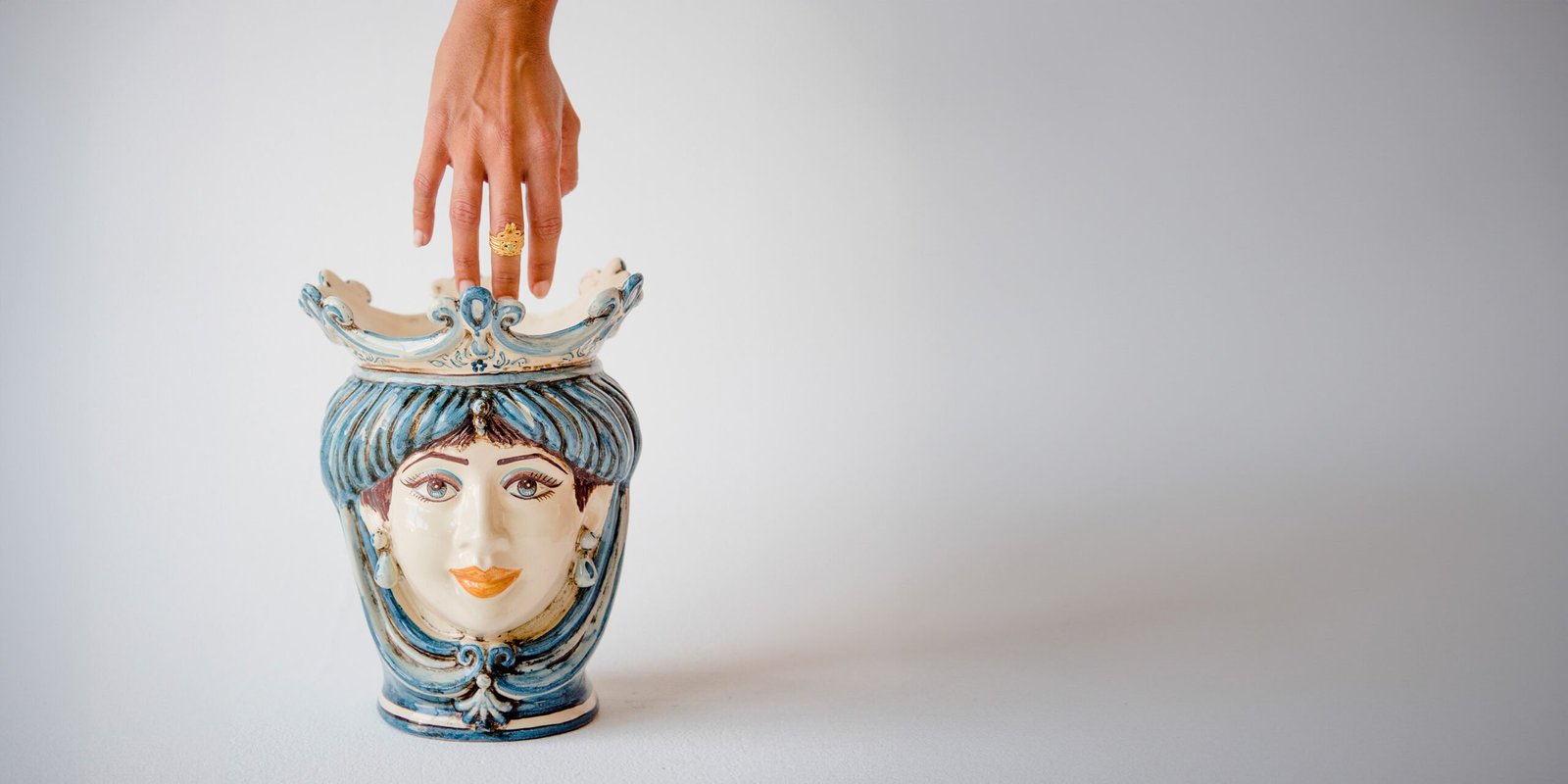The Historical and Cultural Significance of Sicilian Ceramics
Introduction
Sicilian ceramics are not just beautiful artifacts; they are a vivid reflection of the island’s rich cultural heritage and history. These ceramics trace their origins back to ancient times, influenced by various civilizations that have inhabited Sicily. From Greek settlers in the 8th century B.C. to the Arab conquest in the 9th century A.D., each era has contributed unique elements to the craft. This article explores the historical and cultural significance of Sicilian ceramics, their traditional themes and motifs, and the meticulous process behind their creation.
Historical Evolution of Sicilian Ceramics
Greek and Roman Influences
The art of ceramic-making in Sicily began with the arrival of Greek settlers around the 8th century B.C. The Greeks introduced advanced pottery techniques and artistic styles, laying the foundation for Sicilian ceramics. Greek pottery was known for its geometric patterns and mythological scenes, which significantly influenced early Sicilian ceramics. As the island came under Roman rule, a fusion of Greek and Roman artistry enriched the tradition, resulting in intricate designs and superior craftsmanship.
Arab Conquest and Transformation
The Arab conquest of Sicily in the 9th century A.D. marked another significant transformation in ceramic art. The Arabs brought new techniques and vibrant glazes, adding a distinctive flair to Sicilian ceramics. Lustrous glazes, intricate geometric patterns, and floral motifs became hallmarks of the island’s ceramic art during this period. The blending of Greek, Roman, and Arab influences created a unique and diverse ceramic tradition that continues to be celebrated today.
Cultural Significance of Traditional Themes and Motifs
Sicilian ceramics are renowned for their traditional themes and motifs, each carrying symbolic meanings and cultural significance. Common motifs include:
- Trinacria: A three-legged symbol representing the island of Sicily.
- Moorish Heads: Decorative vases depicting the heads of a Moor and a maiden, symbolizing the island’s Arab heritage and romantic legends.
- Pinecones: Often used in decorative items, pinecones symbolize fertility, eternal life, and are a common motif in Sicilian gardens.
- Holy Water Fonts: These ceramics, used for holding holy water, reflect the deep religious traditions and practices of Sicily.
- Cachepots: Ornamental containers for holding potted plants, highlighting the importance of nature and beauty in Sicilian culture.
- Ornamental Plates: These plates are often richly decorated and used for both practical and decorative purposes, showcasing intricate patterns and vibrant colors.
- Vases: In addition to Moorish heads, various types of vases are crafted, often featuring elaborate designs and serving as centerpieces in Sicilian homes.
The use of bright colors such as blues, greens, and yellows reflects the vibrant landscape and Mediterranean climate of Sicily. These traditional themes and motifs highlight the artistic creativity of Sicilian ceramists and serve as a cultural narrative, preserving the island’s history and identity. The enduring appeal of Sicilian ceramics lies in their ability to capture the essence of the island’s diverse cultural influences.
The Ceramic-Making Process
From Raw Clay to Malleable Material: The Preparation Stage
The journey of Sicilian ceramics begins with the meticulous preparation of raw clay. Earthenware and stoneware are primarily used, known for their unique properties that contribute to the durability and aesthetic appeal of the final creations. The clay is extracted from specific quarries and undergoes refining processes to remove impurities. This refined clay is then aged in a controlled environment to achieve the necessary plasticity for molding and shaping.
Kneading, or “wedging,” is a crucial step that enhances the clay’s workability by removing air bubbles and ensuring an even moisture content. The selection of high-quality clay is paramount, as it directly influences the final product’s structural integrity and visual appeal.
Shaping and Designing: The Craftsmanship Behind Each Piece
Various traditional hand-building techniques are employed in shaping Sicilian ceramics, including coiling, slab-building, wheel-throwing, and using molds.
- Coiling: Rolling out long coils of clay, which are layered and smoothed to form the walls of the ceramic piece.
- Slab-Building: Rolling out flat slabs of clay, cut into shapes and assembled to create various forms.
- Wheel-Throwing: Shaping the clay on a rotating potter’s wheel to create bowls, vases, and other vessels.
- Molds: Using liquid clay, or slip, poured into molds to capture intricate designs.
Carving tools are used to add patterns and details, requiring artistic talent and precision.
Firing and Glazing: Bringing Ceramics to Life
The final stages of creating Sicilian ceramics involve firing and glazing. Initially, the ceramics undergo bisque firing at temperatures ranging from 900°C to 1000°C. This transforms the clay into a durable bisque that can absorb glazes effectively. Various types of glazes are used, with majolica being particularly prominent. The ceramics are then subjected to glaze firing at higher temperatures, resulting in a smooth, glass-like surface.
The precise control of temperature and timing is critical in these stages to avoid defects. The choice of glaze and its application require a high degree of skill and experience, ensuring each piece is both beautiful and durable.
Conclusion
The historical and cultural significance of Sicilian ceramics lies in their ability to embody the island’s rich heritage. From Greek and Roman influences to Arab transformations, Sicilian ceramics reflect a blend of artistic styles and techniques. The traditional themes and motifs, along with the meticulous process behind their creation, make these ceramics a cherished part of Sicily’s cultural identity. As a testament to the island’s diverse cultural influences, Sicilian ceramics continue to be celebrated and appreciated worldwide.


